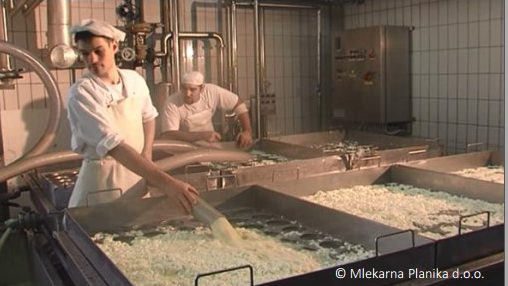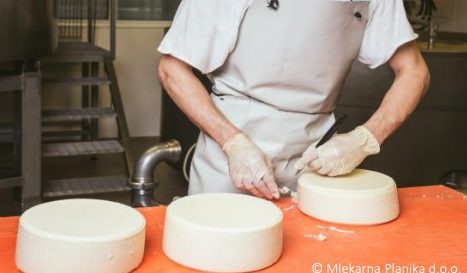A dairy plant in Slovenia created a local mountain supply chain with high added value that resulted in having a positive impact on the local economy and promote the long tradition of the area in dairy production. By modernizing and improving its production technology, the dairy effectively transformed the plant from a milk powder producer to one of the leading producers of high quality fresh milk and cheese in Slovenia.
Context and creation of the dairy
Planika Dairy was established in 1995 by the Agricultural cooperative Tolmin. Its purpose was to secure the purchase of milk from farmers in Posočje area in western Slovenia, and to start new production. The new management faced many challenges at that time: outdated technology, premises with lack of appropriate maintenance, and above all, high level of competition on a relatively small Slovenian market. Therefore, a new product strategy had to be developed to secure the jobs of more than 50 workers and many farmers that were dependent from the dairy.

Modernization and improvements
In order to secure its market competitiveness and strengthen its market position, Planika dairy decided to renovate the company premises, modernise its production technology, improve its work processes and increase awareness of visitors to the area, the local population, existing and potential customers about the farming and milk processing traditions, rural heritage and sustainable approaches on which the company builds its business today and what makes its products unique in the market.
Planika dairy applied successfully for EAFRD (Measure 123) and regional financial support. The modernisation was carried out in a step by step approach. The main measures taken were:
- Technological and technical modernization
Planika invested to modernize as well as to improve hygiene, environment protection and safety at work. Different changes were made including adding new cooling systems, new bottling line for fresh milk, purchase of milk tanks with built in cooling systems, replacement of steam pipelines with higher capacities.
Moreover, modernisations were made in the boiler room and on the wastewater treatment plant, the roof on the building was replaced, and a roof was built over the milk tanks.
- The creation of a museum presenting the tradition of mountain pasture
In 2010, an old building that used to serve as a truck garage was turned into a museum.
In cooperation with the Tolmin musem an ethnological collection titled ‘From the mountain to Planika’ (dairy) was showcased. It presents the tradition of mountain pasture farming and cheese production with numerous milk processing tools and a collection of old photos. Guided museum tours include tasting of the products and practical demonstration of traditional milk processing procedures. The museum includes a small shop where cheese and other milk products can be bought. It also provides shelves for local producers of home-made products and crafts.
The benefits of the modernization of the dairy
- The dairy is now applying high standards of production with increased efficiency and energy savings thanks to better planning of the production processes.
- The instalment of the cooling systems increased the efficiency and energy savings.
- The modernisation of the wastewater treatment facilities also positively affected the environment.
- The technological and technical modernisation secured higher quality of production.
- Wastewater treatment facilities have also a positive impact on the environment.
- The dairy is now one of key producers of the cheese Tolminc with protected designation of origin at EU level since 2012.
- Thanks to the investments the dairy strengthened its operation. Around 100 farmers annually supply approximately 8 million liters of high quality milk and over the years some them significantly increased the quantity of milk they produce.
- The museum of the dairy attracts 8 000 to 10 000 visitors per year and has become a popular attraction promoting rural heritage. It contributes to building up the positive image of the Planika brands and attracting new, informed and loyal consumers. In addition, it has created one full time job and in total three persons qualified as tourist guides combine work in the museum and the local dairy market store next to the production site.

Since 2012 the dairy plant became one of key producers of the cheese Tolminc with protected designation of origin. The cheese is made exclusively from milk produced in the Upper Soča valley. The uniqueness of the dairy is that fresh milk is only pasteurized and not homogenized to keep its natural taste and structure to the highest possible level. No additives are added to the milk.
The Planika dairy cooperative in a good example of how improving the competitiveness of the agricultural sector.
For more information, please visit the brochure of EAFRD funded-project
18 May 2017










